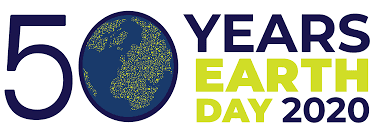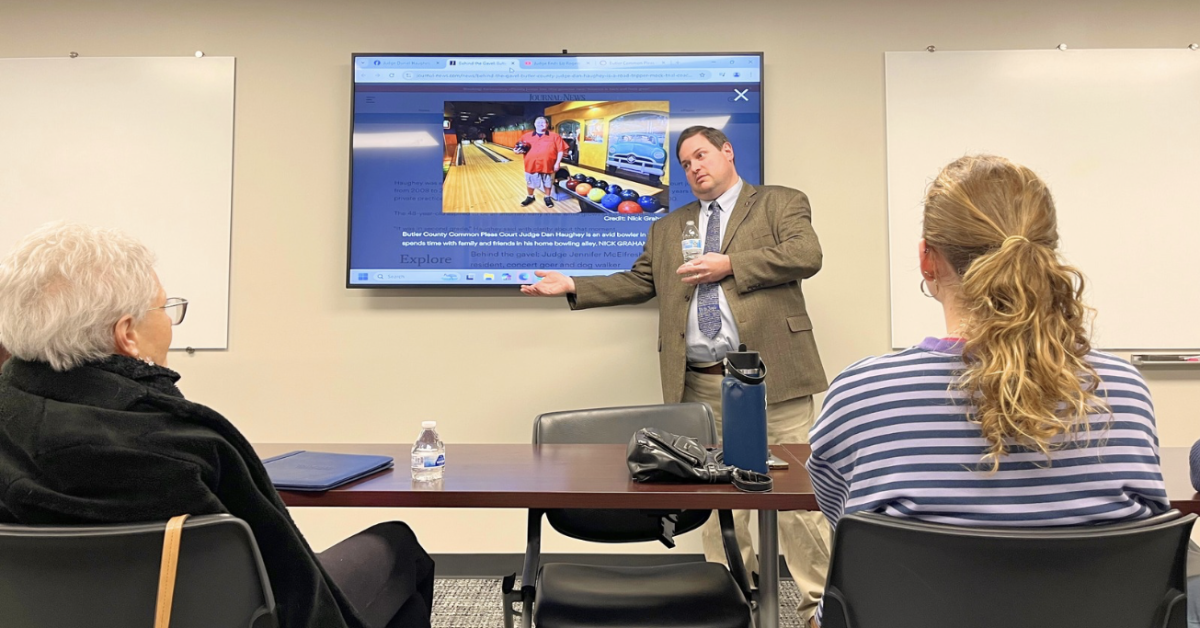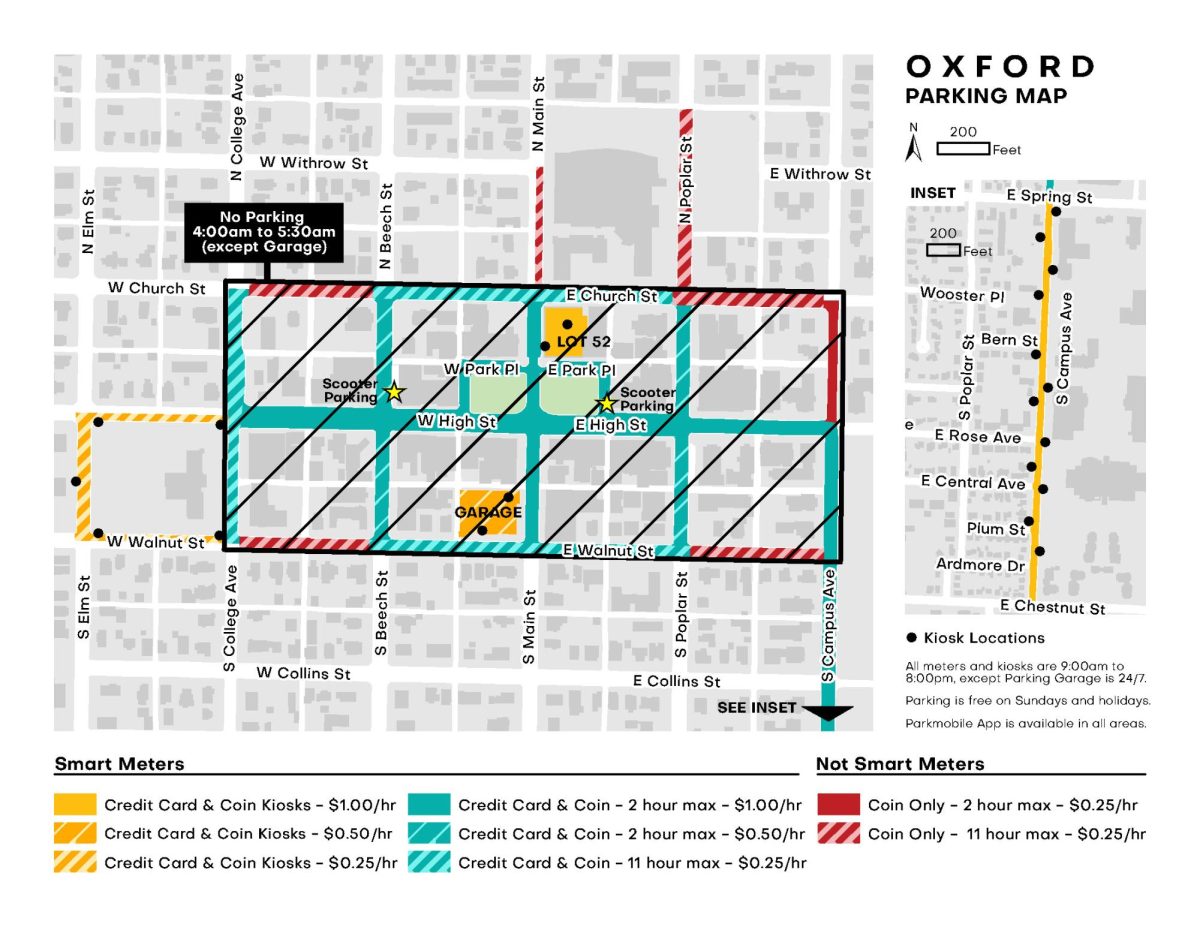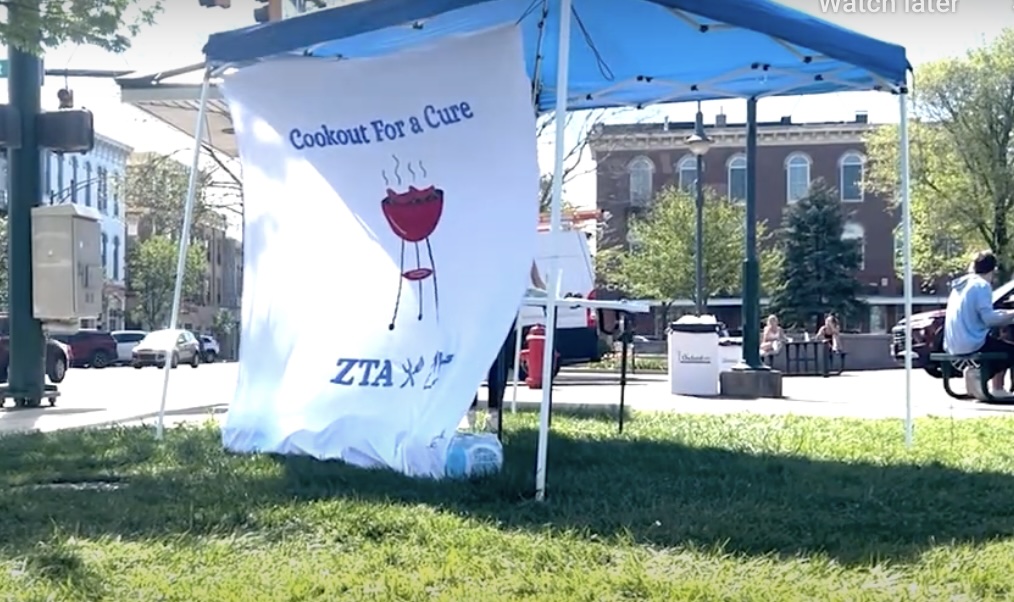Miami University postponed celebration of the 50th anniversary of Earth Day until the planet has the chance to heal from the global COVID-19 pandemic.
University President Gregory Crawford had been set to celebrate the day April 22 by signing the carbon neutrality act. In fact, the university had an “Earth Week” of celebrations planned, but all of that has been pushed back amid the overwhelming concerns of the virus crisis, which prompted Miami to close down face-to-face classes and order faculty and students to do their work from the isolation of home.
While formal commitment to the carbon neutrality act was delayed, Crawford did appoint Adam Sizemore, director of sustainability for Miami, and Johnathan Levy, director of the Institute for the Environment and Sustainability, as co-chairs of the university’s Climate Action Plan Task Force.
Crawford felt that it was not a good time to celebrate the signing of the carbon neutrality act as it would not get the attention it deserved and would not be ideal to those who are dealing with consequences of COVID-19, said Levy on his post on the Miami Sustainability Facebook page.
The task force, however, results from Miami’s commitment to carbon neutrality. Originally it was to be set up to guide the university’s plan in the months following Crawford’s signing of the act. Sizemore and Levy are continuing the work, although without faculty and staff on campus, Sizemore said they won’t be able to as effectively reach out to people and have a dialogue about the plan as they would want.
EarthFest planned for April 18 in Uptown park also had to be canceled. It was to have been a showcase for local organizations that strive toward sustainability and eco-conscious minds, said Macenzie Reed, a second-year master’s student in the Institute for the Environment and Sustainability at Miami.
“It wouldn’t have had an impact like it could have, not as many people involved and wouldn’t have been the celebration it needed to be or could have been,” said Sizemore.
Earth Week 2020 was moved to a virtual celebration featuring student clubs, Interfaith Center talk on Climate Change, poverty and refugees and sustainability goals and challenges.
“This time can be an avenue of exploration of how many things can be done virtually, not driving to conferences, not going across town to talk to someone which can make this time a practice run, everyone learning to be masters at this to have a better environmental impact,” Sizemore said.
Sizemore said he has reached out to parking services to start the conversation of how to keep track of commuting pattern data, air travel emission and to create data sets of the vehicles on campus and what they are used for to help look into different sustainability options.
“Earth day is the time to reflect on previous accomplishments and future sustainability projects,” he said.
Environmental activism continues amid the shutdown
Even with the pandemic shutdown, the 50th anniversary of Earth day is prompting activists for sustainability and the environment to seek creative ways to change humanity’s impact on the environment. “I think in our circumstances, it shows that everyone can change their habits for a more sustainable future with lower emissions and pollution,” said Reed. “But are we brave enough to actually make that change?”
There is talk at Miami of moving the Earth Week programming, which included faculty speakers and lectures, as well as farm and geothermal tours, to October, coinciding with a planned Sustainability Week, said Sizemore. Sizemore and Levy have created a draft of the structure for the Climate Action Plan task force, and will now begin coming up with names of people to sit on the task force, based on their expertise.
Levy said that there was a study by Carnegie Mellon in 2018 that showed that during the 1918 Spanish Influenza Pandemic, the cities with the highest death rates also had the highest air pollution. Scientists have been predicting that we are going to see an increase in human disease as a result of climate change, said Levy. “Environmental concerns are human health concerns,” he said.
A recent study from Harvard shows that air pollution contributes to COVID-19 death rates as particles of PM 2.5 that come from pollution can increase the risk of mortality from COVID-19. The European Environmental Agency stated that 412,000 premature deaths were caused by poor air quality in 2016.
Hays Cummins, professor of geography and a member of the Western Program at Miami, was quoted in an article saying that the lower amounts of pollution recorded during the current pandemic are only temporary. In China, carbon emissions were down by 18% due to the citizens staying at home because of the pandemic as coal consumption decreased. However, while China’s carbon emissions fell by 25% after four weeks of the pandemic, they rose over the next seven weeks.
According to the Environmental Protection Agency, Los Angeles has had its cleanest air quality readings since 1995, due to less carbon emission. The lack of emissions is due to less traffic on the roads which may set a standard for the years ahead to reduce smog. The European Environment Agency stated nitrogen dioxide has decreased in European cities from Milan to Barcelona.
However, according to the United Nations Conference on Trade and Development, larger amounts of non-recyclable waste have been created with a large push to use single use items to avoid the spread of germs during the pandemic.
How far we’ve come
“The needs for environmental protection started long before Earth Day came along 50 years ago,” said Reed. In 1962, Rachel Carson wrote the book, “Silent Spring,” which raised awareness around the environment and links between public health and pollution.
In 1970, U.S. Sen. Gaylord Nelson (D-Wisconsin), saw the need to attract concern to the deteriorating environment. He partnered with Rep. Pete McCloskey (R – California), to encourage students who were staging anti-war protests to call attention to air and water pollution. Twenty million Americans, about 10% of the U.S. population at the time, joined in protest against the consequences of industrial pollution on the environment.
Earth Day not only brought together activists against oil spills, polluting factories and power plants, raw sewage, toxic dumps and pesticides, but it also united Republicans, Democrats, those from all socioeconomic levels and many different careers. The Clean Air Act of 1970 was also signed the same year of the first Earth Day, 50 years ago. Two years later, the Clean Water Act was passed by Congress.
In the 1990s, Earth Day influenced 200 million people in 141 countries to focus on recycling. Earth Day 2000 started a campaign and rallies to focus on global warming actions that need to be taken by world leaders.
Now, one billion people take action on Earth Day in over 190 countries to bring awareness and appreciation to the earth.
“Every year it serves as a reminder to that commitment that we made 50 years ago, to protect our planet,” said Reed. “It reminds us that we need collective action, not just individual lifestyle changes.”

















